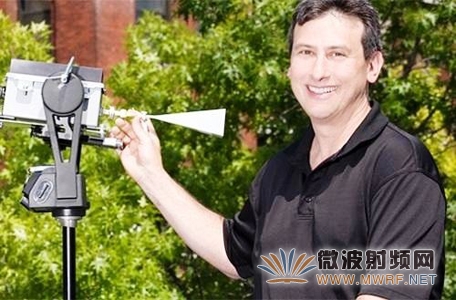美国纽约大学理工学院(NYU Polytechnic)的研究人员Theodore Rappaport呼吁,主管机关应该开放毫米波(millimeter wave)频段的授权,以迎接无线通信领域的技术复兴。
Rappaport预见,28~90GHz频段网络可替未来的的移动设备提供Gbps等级的资料传输;他的技术研究中心已经在进行一些技术概念的测试,但还需要更大规模的努力。

Rappaport在接受EETimes美国版编辑专访时表示,“电信营运商需要有个测试场,来开发各种能运用在28GHz、38GHz与79~90GHz频段的产品原型;在该领域已经有很多相关研发活动,我只担心美国会在其中落后。”
他认为,美国联邦通信委员会(FCC)应该针对研究用途以及一些移动应用程式的轻度商业化开放上述频段,“韩国与中国都已经看到相关商机,而且显然在开放毫米波频段给蜂窝移动通信应用方面有较开放的态度。”802.11ad标准60GHz WLAN技术是一个开端,而仍在开发阶段的未来5G移动通信,将会让该频段繁荣发展。
Rappaport表示,5G 将采用智能天线技术--将数百个像沙粒般微小、以高介电材料制作的天线元件一起定相(phased),并洒进智能手机中,“相控阵已经被运用在许多高成本军事系统中,要将该技术带到消费性电子产品上,我们还面临一些技术性问题。”
在另一方面,5G技术需要全新的无线路由器与中继器(repeater),这也将为网络带来智慧功能;Rappaport指出,未来距离200~400公尺远的基站通过快速结合波束,联合在一起提供宽频连结。他的研究中心已经建立了一个纽约市内毫米波信号传播特性的资料库,吸引了包括AT&T、Intel、Samsung等企业赞助。
Rappaport表示,“我们的研究展示了在都市环境中反弹能量(bouncing energy)的方向性天线,能形成良好的蜂窝连结,而且在某些方面表现比如今的蜂窝网络更好。”其研究中心接下来将开发统计模型以及频道仿真器,做为5G系统与标准的测试平台;那些工具将协助网络服务业者进行成本估算,以及规划毫米波城市通信网络。
编译:Judith Cheng
(参考原文:5G Spectrum Needed, Says Expert,by Rick Merritt)
原文参考:
5G Spectrum Needed, Says Expert
US regulators need to open up licensing of millimeter wave bands to make way for a coming renaissance in wireless, according to a leading researcher.
Theodore Rappaport foresees networks using 28 to 90 GHz bands to deliver several Gbits/second to tomorrow's mobile devices. The wireless research center he runs at NYU Polytechnic is testing out such ideas, but a broader effort is needed, he said.
"We need a playground for carriers to develop the prototypes to show what can be done at 28, 38 and 70-90 GHz bands," Rappaport said in an interview with EE Times. "There's a big movement here, but I'm just afraid the US is behind in it," he said.
The Federal Communications Commission needs to license the bands for experimental and light commercial use on mobile apps, he said. "Korea and China see this opportunity and appear to be more spectrum friendly in the use of millimeter waves for cellular mobility," he added.
The 802.11ad standard for 60 GHz wireless LANs planted seeds here. But tomorrow's 5G cellular networks, now in development, could show a flowering of the spectrum, Rappaport believes.
5G "will be the first technology to use smart antennas -- hundreds of tiny antenna elements the size of a human freckle made in high-dielectric materials, phased together and sprinkled into smartphones," he said. "Phased arrays have been used in high-cost military systems, but we face a lot of technical issues bringing them to consumer products."
At the other end of the network, 5G will require new kinds of wireless routers and repeaters. This will provide intelligence for networks in which base stations collaborate to provide broadband links by quickly combining beams over distances of 200 to 400 meters, he said.
Rappaport's center has already created a database of the propagation characteristics of millimeter wave signals in urban New York. The work has attracted interest from corporate sponsors such as AT&T, Intel, Qualcomm, and Samsung.
"Our work showed directional antennas bouncing energy in an urban environment makes a good cellular link -- better than today's cellphones" in some respects, he said, pointing to a widely cited paper.
Going forward the center aims to develop statistical models and channel emulators to benchmark 5G systems and standards. The tools could help service providers develop cost estimates and plans for city-wide networks that ride millimeter waves.
Rappaport's NYU research center created a database of measured millimeter-wave propagation effects in New York's urban canyons.
—Rick Merritt, Silicon Valley Bureau Chief, EE Times



 粤公网安备 44030902003195号
粤公网安备 44030902003195号